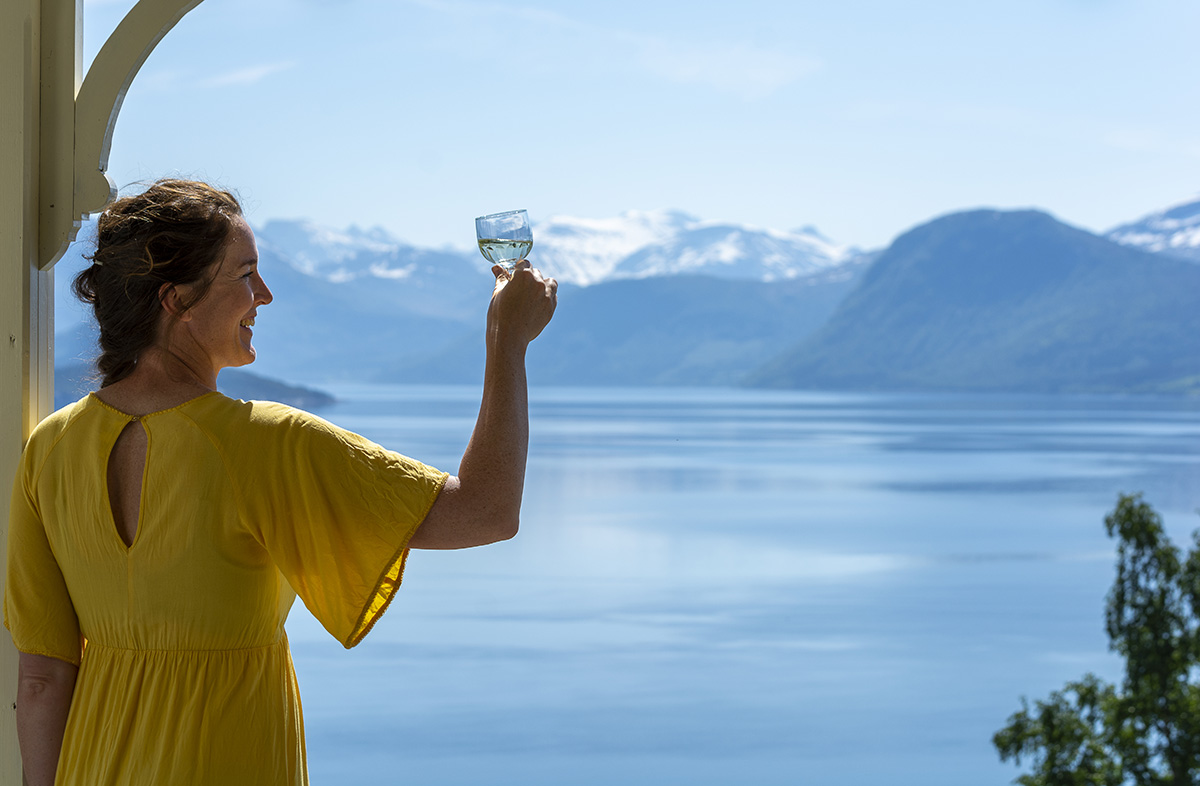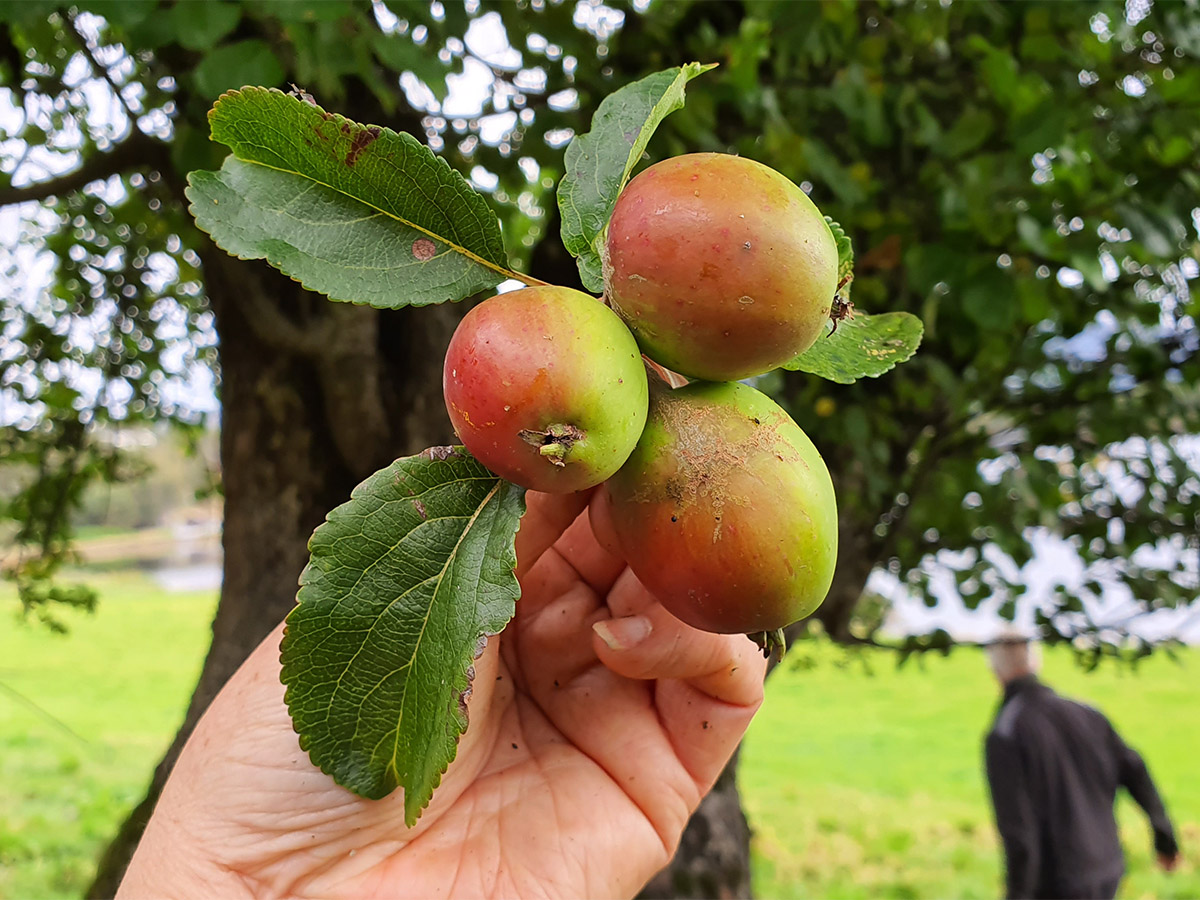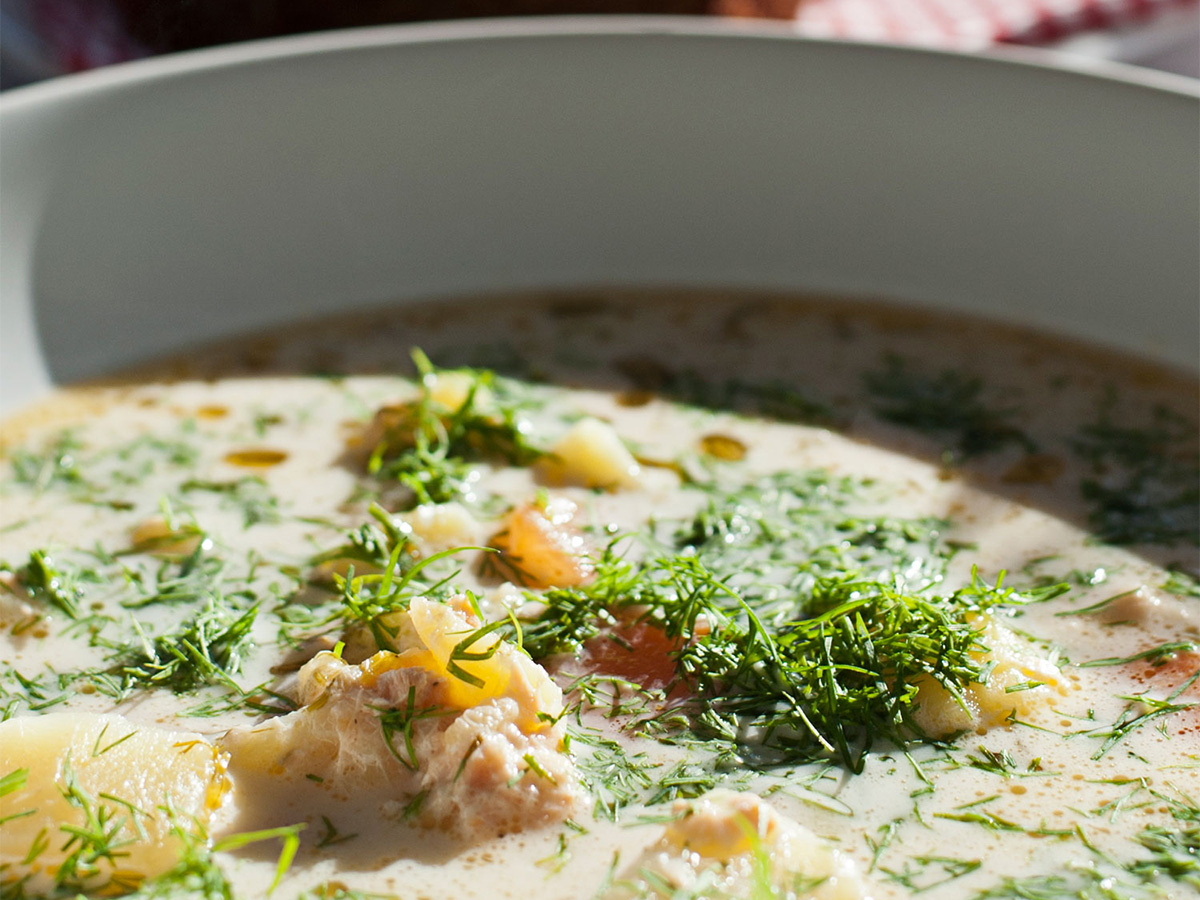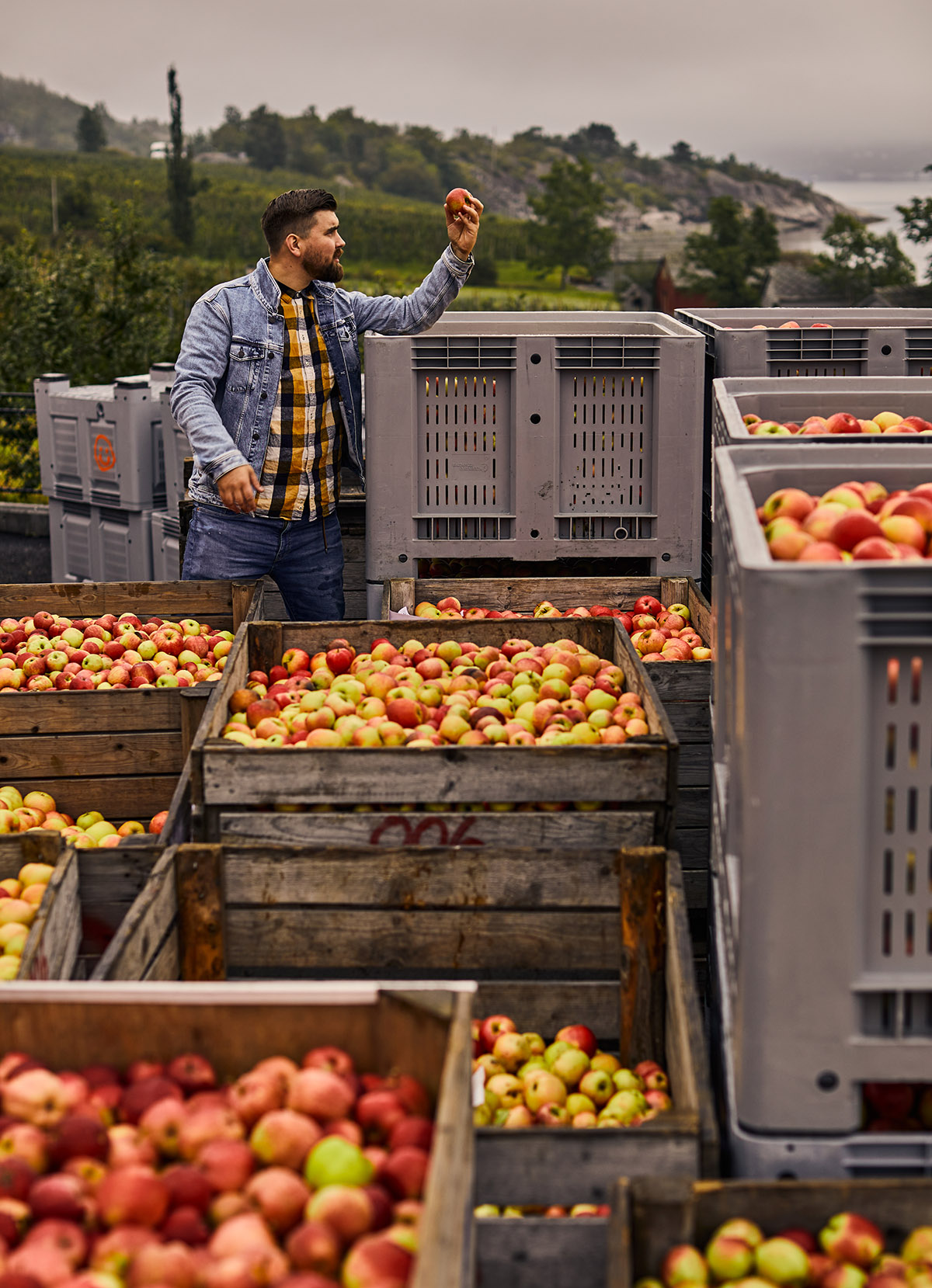Ten ways to enjoy a Scandilicious Christmas
Text: Linnea Dunne
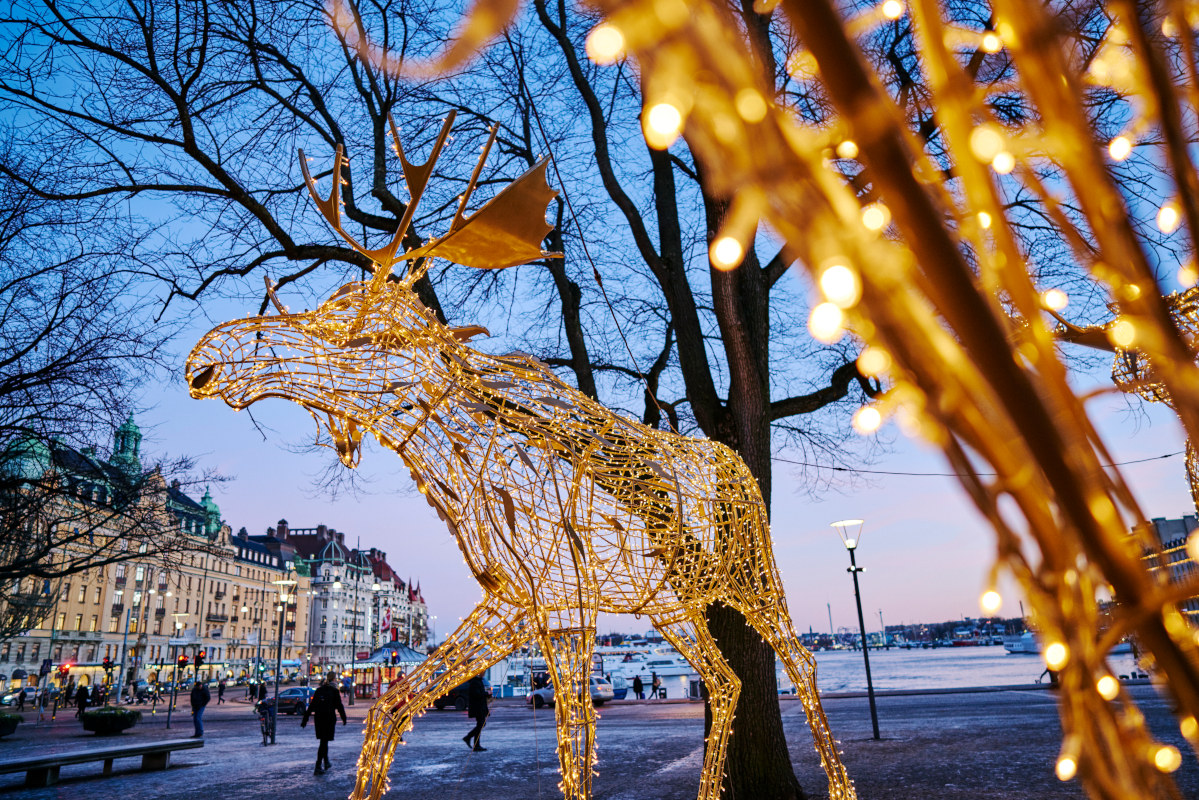
© Johan Mard, Imagebank.Sweden.Se
1. Prepare for Advent with sophisticated decorations
Combine an unmatched design heritage with a penchant for hygge, and it’s obvious why no one does sophisticated cosiness better than Scandinavians. The build-up to Christmas is no exception: think atmospheric lighting, candles everywhere, and patterns resembling snowflakes and stars. It all kicks off on the first weekend of Advent – the four Sundays in anticipation of Christmas – and the Advent star and Advent candle holder are among the most important decorations.

Photo © Simon Paulin, imagebank.sweden.se
2. Light a calendar candle for a Christmas countdown
Throughout Scandinavia, and in Denmark in particular, the calendar candle makes a hugely popular countdown from 1 December all the way to Christmas Eve, which is the big day in the Nordic countries. These thick block candles are lit every day, erasing the dates one by one as the wax melts away.

Left to right: Swedish Lucia. Photo © Lena Granefelt | Danish calendar candle. Photo © Kristian Krogh
3. Pay tribute to an Italian martyr
Sweden may be a reasonably secular country, but this important tradition is all about remembering and celebrating an Italian girl who was killed for her faith. Don’t ask for logic here; the link is in stories told by the monks who travelled to Sweden and brought Christianity with them. The legend about Lucia goes that she wore candles on her head in order to have both hands free when bringing food to persecuted Christians in Rome. With 13 December being the shortest day of the year – the day for a festival of lights in the old, pagan calendar – it seemed like just the perfect time to pay tribute to generosity, kindness and light bringing. Schools up and down the country in Sweden, and now also in Denmark, do so by dressing the pupils in all-white gowns and, indeed, plenty of candles. Traditionally, boys get to wear star-adorned cones on their heads or dress up as gnomes or gingerbread men. Again – don’t ask for logic…

Lussebullar. Photo © Magnus Carlsson, imagebank.sweden.se
4. Bake treats as if your life depended on it
If you’re not baking Christmas treats, are you even worthy of celebrating Christmas at all? Not in Scandinavia, you’re not. Buying ready-made sweets and baked goods will suffice only if you’re doing so while attending an atmospheric market or having a ‘fika’ at a nice café while Christmas shopping – but, really, the baking is more than a means to an end, an activity that should be cherished as much for the social aspect of it and the lovely scent it brings to your house as for the treats you get at the end. Around Lucia time, saffron buns and gingerbread men are must-haves, but treats such as the Danish ‘brunkager’ and ‘klejner’, the Swedish ‘knäck’, the Finnish ‘tähtitortut’ and various versions of fudge and marzipan figurines are also important for a genuinely Nordic Christmas vibe.

Finnish winter sauna. Photo © Harri Tarvainen
5. Display Viking courage with a winter sauna
Saunas are a part of daily life in Finland, and so saunas are also a part of the festive season. You might shiver at the thought of running naked through the snow for a dip in ice-cold water, but ask Wim Hof and you’ll see that it has plenty of benefits. More importantly, that Scandinavian predilection for cosiness is rarely as striking as when you’re sitting there – in the nude or wrapped in a towel, if you insist – sweating out the year’s frustrations in the heat of a winter sauna. For an extra festive touch, add candles and a mug of ‘glögi’ (see point 6) before or after.

Glögg. Photo © Helena Wahlman, imagebank.sweden.se
6. Over-consume Scandinavian mulled wine
‘Glögg’, ‘gløgg’ or ‘glögi’ is Scandinavian mulled wine, made with ginger, cinnamon, cardamom, bitter orange peel and cloves. It is typically consumed at least every Sunday of Advent and on Christmas Eve, Christmas Day and Boxing Day, and often all the way through the holidays until New Year’s Eve. These days, the glögg craze often starts weeks before Advent officially kicks off, making most of the festive season into a glögg-fuelled but gorgeous-smelling haze. Serve heated in small mugs with raisins and blanched almonds, and remember to serve the children nothing but the kiddie version.

Left to right: Photo © Pexels, Tembela Bohle | Classic Danish Christmas foods. Photo © J. Buusman
7. Try all the new Christmas beers
Just like there’s a special type of Christmas cola – julmust – in Sweden, Scandinavians are fans of making special Christmas brews. Decades ago, there was ‘julöl’ or ‘juløl’ – a type of Christmas beer with a special festive flavour. Off the back of the craft beer trend, there is now a long line of seasonal brews, covering different beer types as well as strengths. They are a must to have with Christmas dinner, and ideally also on what’s sometimes referred to as ‘Little Christmas’, on the evening of 23 December. But with so many different types to try, it’s a good idea to start well before then in order to ensure that you can enjoy the very best kind on the big day itself.

Swedish dance around tree. Photo © Carolina Romare, imagebank.sweden.se
8. Dance like frogs and little old ladies
You thought the funny dancing was reserved for Midsummer alone? Welcome to Christmas Eve and the tradition of dancing around the Christmas tree, a habit some families embrace more reluctantly than others. Favourites like the frog song (Små grodorna) and the one about the little old ladies (Tre små gummor) make a comeback after six months’ hibernation, and the repertoire is added to with some special Christmas tunes. They’re no Fairytale of New York, but who can argue with a bit of movement to get all those Christmas treats to settle?

Swedish Christmas food. Photo © Helena Wahlman, imagebank.sweden.se
9. Enjoy a smorgasbord of Christmas food
Forget the plate of meat and trimmings; Scandinavians do an entire table or two of different kinds of meat, fish, bread, bakes, potatoes, salads and sauces, and you must go for seconds – or even thirds. From across the various Nordic countries you get everything from meatballs, ‘sill’ (pickled herring), baked ham and rice pudding to roast duck, pork belly, ‘lutefisk’ (cod cured in lye), ‘pinnekjøtt’ (dry-cured ribs of lamb) and turkey, along with crispbread and rye bread, beetroot salad and creamy potato gratin with anchovies. Add snaps and snaps songs, and you’ll soon be ready to crash out.

Meeting Santa. Photo © Jani Kärppä & Flatlight Films
10. Welcome Santa Claus into your home
Scandinavians don’t mess about. Forget paying a fortune for your kids to sit on Santa’s lap and get a photo taken in a shopping centre; in the Nordic countries, the old man himself comes to your house to hand out the presents. The logistics involve someone – traditionally the father of the house, but recently often a kind neighbour or other friendly face – popping out ‘to buy the paper’ and missing the whole shebang, while a bearded Father Christmas knocks on the door and asks if there are any kind children there. If you’ve ever been there when a child who’s used to Santa coming at night experiences this for the first time, you’ll know it’s Christmas magic at its very finest.
Subscribe to Our Newsletter
Receive our monthly newsletter by email

